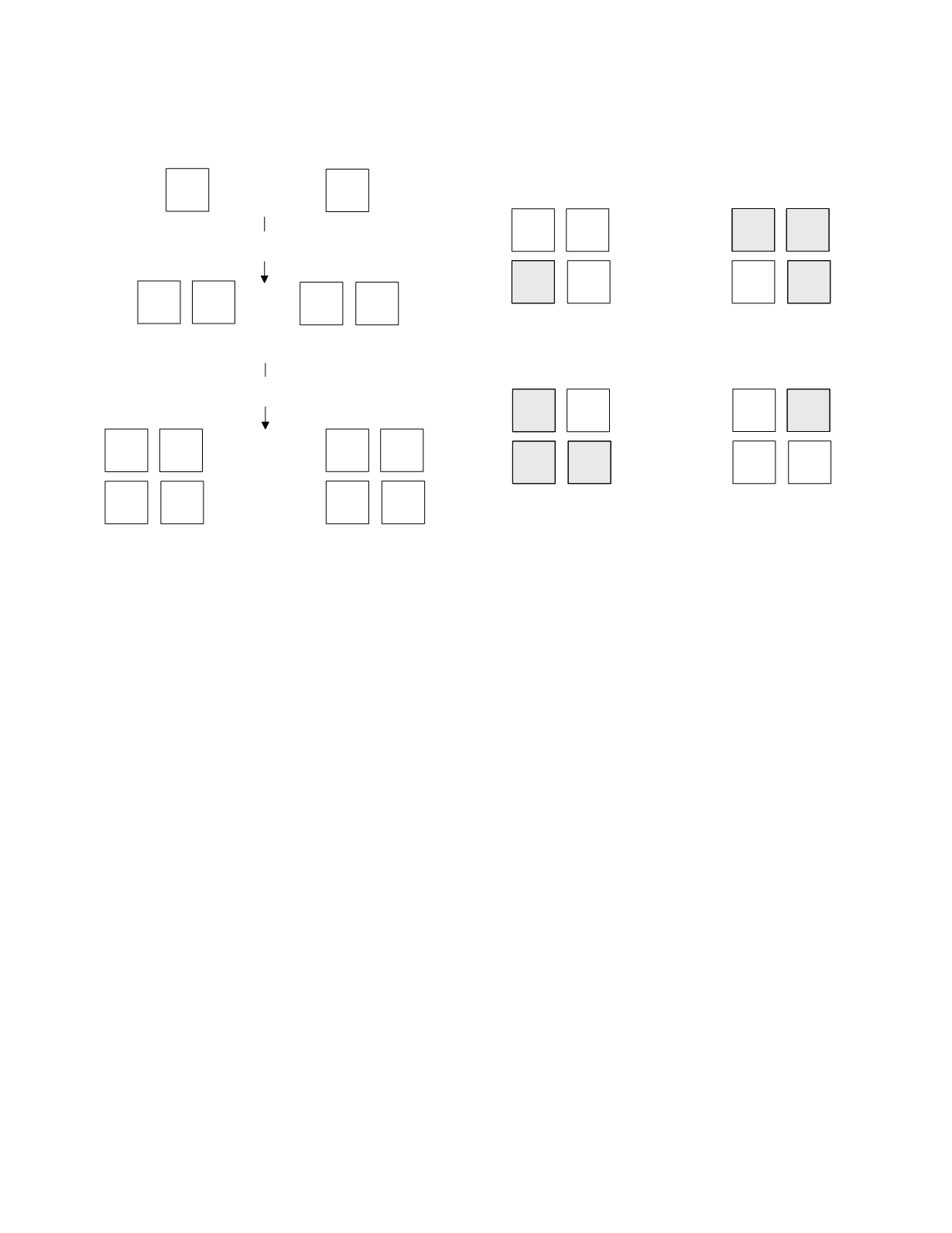
following example. The single test diagnostic
performance of transferrin saturation at the critical
value of 10% saturation recommended by Dallman
et al.
(1981) consists of a sensitivity of 0.53 and a
specificity of 0.75. What happens if the study is
repeated in the same patients? If there is no classifi-
cation correlation between the initial and repeat
study—that is, if the performance characteristics of
the study in the diagnostic subgroups formed by the
initial application of the study are the same as they
are in the population as a whole—the repeat study
results will be as shown in Figure 3.4. For the 82
iron-replete patients initially classified as negative,
62 will have negative results with the repeat study
but 20 will have positive results. For the 29 iron-
deficient patients with positive results from the first
test, 15 will have a positive repeat study result and
14 a negative result. And so on for the other
categories.
One way to categorize these patients clinically is
to decide that the test series is positive if either the
initial or repeat study result is positive. This positiv-
ity rule is designated "believe-the-positive." The
diagnostic performance resulting from this rule is
indicated at the top of Figure 3.5. Forty-three
iron-deficient patients will have at least one positive
test result, so the sensitivity of the series is 0.78 (43
divided by 55). Of the patients who are iron replete,
62 will have both results negative and will therefore
be appropriately categorized. The specificity is
therefore 0.56 (62 divided by 110). Another way to
categorize the patients is to consider the test series
positive only if both study results are positive. This
positivity rule is referred to as "believe-the-nega-
tive." Its performance, as demonstrated at the
bottom of Figure 3.5 is a sensitivity of 0.27 (15
divided by 55) and a specificity of 0.94 (103 divided
by 110).
As shown in the example, the "believe-the-
positive" positivity rule leads to an increased sensi-
tivity and a decreased specificity compared to a
single application of the study. This is because
individuals who have the disorder have two opportu-
nities to be detected while those who do not have the
disorder have two chances to be misclassified. In
contrast, use of the "believe-the-negative" positivity
rule results in decreased sensitivity but increased
specificity. With this rule patients who have the
disorder have two opportunities to be misclassified
while those who do not have the disorder have two
chances to be correctly identified. With additional
repetitions of the study, the diagnostic performance
Diagnostic and Prognostic Classification
3-5
Figure 3.4
Diagnostic performance of repeat testing using
transferrin saturation, assuming a repeat classification
correlation of zero.
iron-replete
patients
iron-deficient
patients
110
55
82 28
26 29
>10% <10%
initial result
>10% <10%
initial result
initial study
repeat study
12 14
>10% <10%
initial result
62 21
>10% <10%
initial result
20 7
14 15
>10%
<10%
>10%
<10%
repeat
result
iron-replete
patients
iron-deficient
patients
12 14
>10% <10%
initial result
62 21
>10% <10%
initial result
20 7
14 15
>10%
<10%
>10%
<10%
repeat
result
believe-the-positive
12 14
>10% <10%
initial result
62 21
>10% <10%
initial result
20 7
14 15
>10%
<10%
>10%
<10%
repeat
result
believe-the-negative
Figure 3.5
Application of different positivity rules to repeat
testing using transferrin saturation, assuming a repeat
classification correlation of zero.


